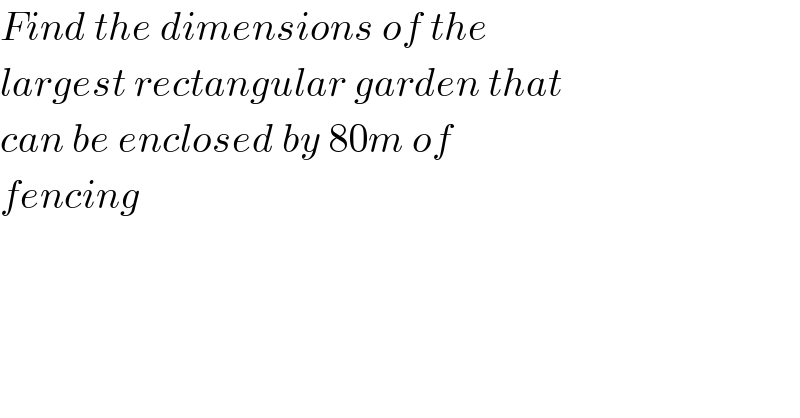Question Number 118570 by rexfordattacudjoe last updated on 18/Oct/20

Answered by TANMAY PANACEA last updated on 18/Oct/20

Commented by JDamian last updated on 18/Oct/20
if you replace 80 with P (perimeter) you'll get P/4; which it means "square"... because the square is the rectangle which gets the biggest area for a given perimeter.
Commented by rexfordattacudjoe last updated on 18/Oct/20

Answered by 1549442205PVT last updated on 18/Oct/20

